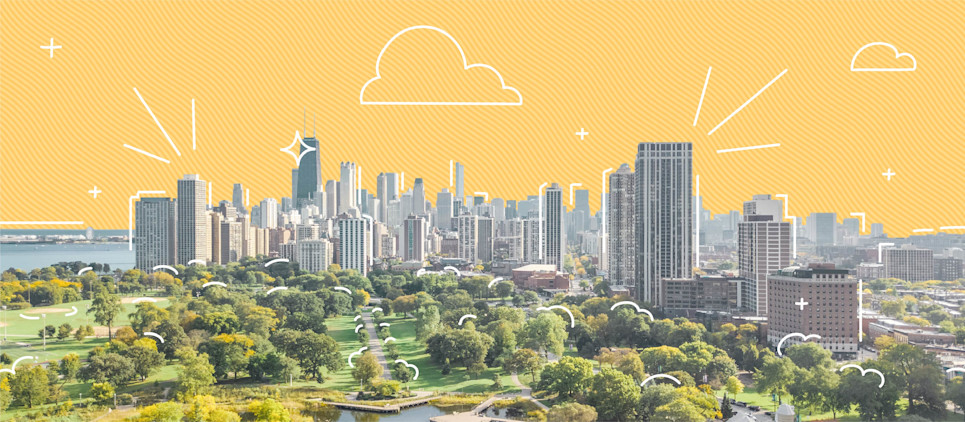The 10 most affordable cities in the US
The workplace in America is changing as we experience what some are calling the largest remote work experiment in history. Many workers are no longer tethered to the densely packed, expensive cities where their companies were headquartered and are looking at real estate in cities they might not have considered before. Even companies are seeking incentives to improve quality of life for their employees.
Case in point: In the last year alone, 154 companies announced plans to relocate to or expand in Austin, Texas (one of the cities on our list, below), including Tesla, Samsung, Charles Schwab, and Apple.
Gauging a city’s affordability is a personal decision. For instance, you can measure metrics such as the median household income in a metro area, the median home value (we used recent statistics by Zillow), median rent (our source: RentCafe), as well as state and local income tax rates, and the cost of living index (a metric that determines your local buying power relative to the national average in home purchase price, rent, utilities, food, and transit). But you’ll also want to look at some less tangible, more subjective features of that city: Are there cultural, sports, or natural surroundings that are important to you?
Here are 10 of the most affordable cities in America. City population data comes from the 2019 US Census; cost of living from Numbeo’s index; median home price from Zillow; and average rent from RentCafe.

Table of contents
El Paso, TexasWichita, KansasLexington, KentuckyLittle Rock, ArkansasTulsa, OklahomaMemphis, TennesseeKnoxville, TennesseeAustin, TexasBoise, IdahoAkron, OhioEl Paso, Texas
City population: 679,813
Cost of living score: 56.05
Median home price: $162,696
Average rent: $836
The second-largest city in the Southwest (after Phoenix, Arizona), El Paso is one of the largest cities in the US with the lowest cost of living. There’s a first-time homebuyer program to nudge sales, and the weather is sunny: 297 sunny days, on average. It’s close to the stunning Franklin Mountains State Park and Hueco Tanks State Park and Historic Site. Employment prospects here are good: More than 70 Fortune 500 companies have offices here, including AT&T, Raytheon, Verizon, and Wells Fargo.
Wichita, Kansas
City population: 389,877
Cost of living score: 59.56
Median home price: $157,203
Average rent: $703
Plenty of people are discovering the benefits of living in Wichita, since its population numbers have risen nearly 5% since 2010. Though its economy has historically been based on its cattle and grain industries, industry has expanded to oil and aviation. In fact, its nickname is now “Air Capital of the World,” thanks to companies like Beech, Cessna, Lear, and Boeing. Thirty-three museums around Wichita’s downtown make it a rich cultural center. Keep in mind that Wichita’s climate can be harsh and its schools are rated below average for college prep.
Lexington, Kentucky
City population: 323,152
Cost of living score: 59.85
Median home price: $236,745
Average rent: $976
For horse-lovers, there’s no better place than the so-called “Horse Capital of the World,” home to thoroughbred horse farms located in the green hills just outside the metro area. As well as its affordable housing and education, and diverse cuisine (not just great bourbon), the average property tax is .960%, well below the national average of 1.211%. Its income tax is a flat rate of 5%, regardless of income.
Little Rock, Arkansas
City population: 197,958
Cost of living score: 60.88
Median home price: $165,110
Average rent: $861
Little Rock continually attracts new residents thanks to its low cost of living but also as the cultural, economic, and government hub of Arkansas. Nature lovers flock to Little Rock for its proximity to the gorgeous hikes, climbs, and boating of Pinnacle Mountain State Park, just outside town, and its close proximity to Memphis, Dallas, and Oklahoma City make it a convenient place to be. Its medical care ranks highest in the state.
Tulsa, Oklahoma
City population: 402,324
Cost of living score: 60.96
Median home price: $150,067
Average rent: $760
Tulsa sits along the Arkansas River among the beautiful Osage Hills and at the foothills of the Ozark mountains, making it a paradise for those who love to live in close proximity to outdoor activities. It’s home to a diverse group of industries, from finance to aviation, technology, and telecommunications, and has a historically healthy job market. Lots of jogging trails and museums, plus restaurants and zoos make it a very livable city. You’ll need to be prepared for some tradeoffs, though: Tulsa has a high crime rate and higher-than-average sales and state income taxes.

Memphis, Tennessee
City population: 651,932
Cost of living score: 62.76
Median home price: $120,260
Average rent: $760
Memphis sits right on the Mississippi River, and considering all the things it’s famous for—incredible music, barbeque, shockingly low housing costs—Memphis is a very easy place to love. Three Fortune 500 companies—FedEx, International Paper, and AutoZone—have their headquarters here, and there’s easy access to beautiful parks, trails, forests, and rivers. Keep in mind, though, that the sales tax rate of 9.25% is one of the highest in the country, although Tennessee doesn’t charge a state income tax. For those who telecommute, it’s an especially great deal: Memphis has a low median income, with residents earning 35% less than the average American.
Knoxville, Tennessee
City population: 186,173
Cost of living score: 62.90
Median home price: $250,248
Average rent: $1,167
Combine small-town charm in a town surrounded by the majestic Appalachian Mountains with affordable homes, great food, and a stable economy that’s a center for retail trade, healthcare, and educational services, and you get a very livable city. It’s the gateway to the Great Smoky Mountains; the Tennessee River runs through downtown, and it is the home of the University of Tennessee and the Women’s Basketball Hall of Fame. Those devoted to US history will be interested in the great number of nearby Civil War battlefield sites since the city was a strategic stronghold.
Austin, Texas
City population: 950,807
Cost of living score: 62.99
Median home price: $540,086
Average rent: $1,431
If it seems like there’s been a mass migration to this capital city lately, you’re not wrong. In addition to its beautiful weather, low cost of living, and unique culture, it’s also an industrial powerhouse. The international defense, aerospace, and security company BAE systems has headquartered here for 65 years, and thanks to incentives, companies like Samsung, Apple, and Tesla are flocking here as well, making it a great place for job-seekers. It has ranked No. 1 on U.S. News’ Best Places to Live for good reason: the third-largest city in the US, it has a mild climate (that gets hot and humid in the summer); a downtown that surrounds the picturesque Lady Bird Lake, and a blazing-hot restaurant scene.
Boise, Idaho
City population: 226,115
Cost of living score: 63.06
Median home price: $456,406
Average rent: $1,370
One of America’s cheapest cities to live in is also one of its fastest growing, experiencing a population boom of 8.2 percent between 2010 and 2018. Tech companies have exited Silicon Valley in favor of the incentives and low cost of living of the Boise area, and the Boise School District is one of the nation’s top performing districts. Those who love nature, though, may love Boise the best. It’s within driving distance of multiple ski resorts, and with Boise State University nearby, it can feel like a college ski town.
Akron, Ohio
City population: 198,051
Cost of living score: 63.11
Median home price: $89.086
Average rent: $866
In the last year, data compiled by U-Haul International show that Ohio was the No. 4 growth state in the nation, with more people moving to Akron than leaving it. That might be due to its scenic landscapes (it’s right on the edge of the Cuyahoga Valley National Park), or the fact that healthcare here is 16% lower than the national average, as are the costs of goods and services. It’s a center of manufacturing, education, healthcare, and biomedical research, making it a good place for job-seekers.
Bungalow’s homes are designed for roommates, located in the best neighborhoods, and set up for seamless living. Whether you already have roommates or are looking for new ones, there’s a Bungalow with your name on it. Find your Bungalow.
Ready to find your next home?
Move-in ready homes and a built-in community so you can feel at home, together — wherever you are.
Suggested articles



